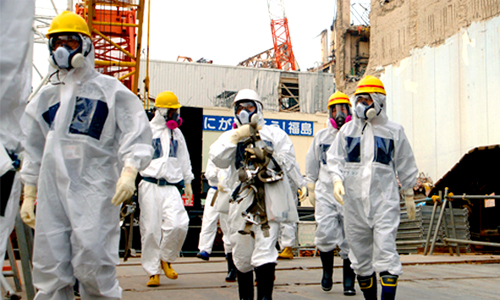
Fukushima Should Have Served as Wake-Up Call for U.S. Nuclear Regulatory Commission

The FLEX program is a prime example of the industry jumping out ahead of the NRC. In this case, the industry purchased backup emergency equipment—pumps, compressors, generators, batteries and the like—before the NRC had the chance to develop guidelines for the program. To cut costs, the industry bought commercially available equipment that may not weather a severe accident and the industry-initiated FLEX guidelines hinge on ambiguously worded, hard-to-enforce directives that, for example, mandate “reasonable protection” of safety equipment. Regardless, the NRC largely approved the industry’s plan instead of developing its own standards.
7 Top #NRC Experts Break Ranks to Warn of Critical Danger at Aging #Nuke Plants https://t.co/mXbRn3RywP @riverkeeper pic.twitter.com/5KgSg3aEbQ
— EcoWatch (@EcoWatch) March 9, 2016
Likewise, the NRC decided to continue to allow plant owners to develop their own voluntary plans for managing a core-melt accident, rejecting a task force recommendation to require them to do so. If plans are voluntary, the NRC has no authority to review them or issue citations when they are deficient.
“Once again, the NRC is ignoring a key lesson of the Fukushima accident: Emergency plans are not worth the paper they are printed on unless they are rigorously developed, maintained, periodically tested and subject to NRC inspection and enforcement,” said Lyman. “When it comes to many critical safety measures, the NRC is allowing the industry to regulate itself.”
Saying No to Filtered Vents
When three of the six Fukushima Daiichi reactors overheated, plant workers scrambled to lower reactor core pressure by depressurizing the containment building so they could inject cooling water. They couldn’t open the containment vents from the control room, however, because there was no electric power. Without enough cooling water, the reactors melted down.
To avoid the possibility of this happening at the 30 currently operating U.S. reactors that share the same containment design as those at Fukushima, the NRC staff recommended that the agency not only require plant owners to install reliable, “hardened” vents that could be easily opened during an electricity outage, but also compel owners to add filters to avoid releasing radioactive material into the surrounding community. Four countries with the same type of GE reactors—Finland, Germany, Sweden and Switzerland—require filtered vents and Japan is planning to do so.
The nuclear industry, however, argued that the FLEX program obviated the need for filtered vents, despite the fact that filters would be more dependable than relying on plant workers to perform complex tasks under very trying circumstances. After years of analysis, the NRC staff reversed its original recommendation, asserting that that neither vent filters nor the industry’s proposed alternatives were justified. Last August, NRC commissioners voted to do nothing.
“As a result,” the UCS report states, “in the event of a severe accident, the NRC is leaving plant operators with a horrible dilemma: … open the vents and deliberately release radioactivity into the environment or … allow the reactor containment to overpressurize and potentially rupture, resulting in an even greater release of radiation.”
Either way, we’re talking about contaminating a vast area with high levels of radioactivity and increasing the cancer risk for nearby residents.
NRC Should Reconsider Safety Recommendations
The UCS report pulls back the curtain on a post-Fukushima reform process that has largely played out behind the scenes. Hopefully its findings will raise some eyebrows—if not sound the alarm—on Capitol Hill and in the Obama administration, because public safety depends on federal oversight. Elected officials should insist that the NRC reconsider the safety measures it rejected, especially replacing its hodge-podge of vaguely written rules and voluntary guidelines with a rational regulatory approach and establishing a transparent process that allows the public to assess the effectiveness of its reforms.
“The NRC and the nuclear industry have taken steps to address some of the safety vulnerabilities revealed by the Fukushima disaster,” said Lyman. “But so far, the agency has failed to fully learn the lessons of Fukushima. It needs to go back to the drawing board and reconsider critical safety recommendations that it dismissed without good justification. And let me stress: This is not an academic exercise. The health and safety of more than 100 million Americans who live within 50 miles of a nuclear plant hang in the balance.”
YOU MIGHT ALSO LIKE
7 Top NRC Experts Break Ranks to Warn of Critical Danger at Aging Nuke Plants
5 Years After Fukushima, ‘No End in Sight’ to Ecological Fallout
Radioactive Leak at Indian Point Nuclear Plant Shows ‘We Are Flirting With Catastrophe’
5 Years Later Fukushima Still Spilling Toxic Nuclear Waste Into Sea, Top Execs Face Criminal Charges

 233k
233k  41k
41k  Subscribe
Subscribe 